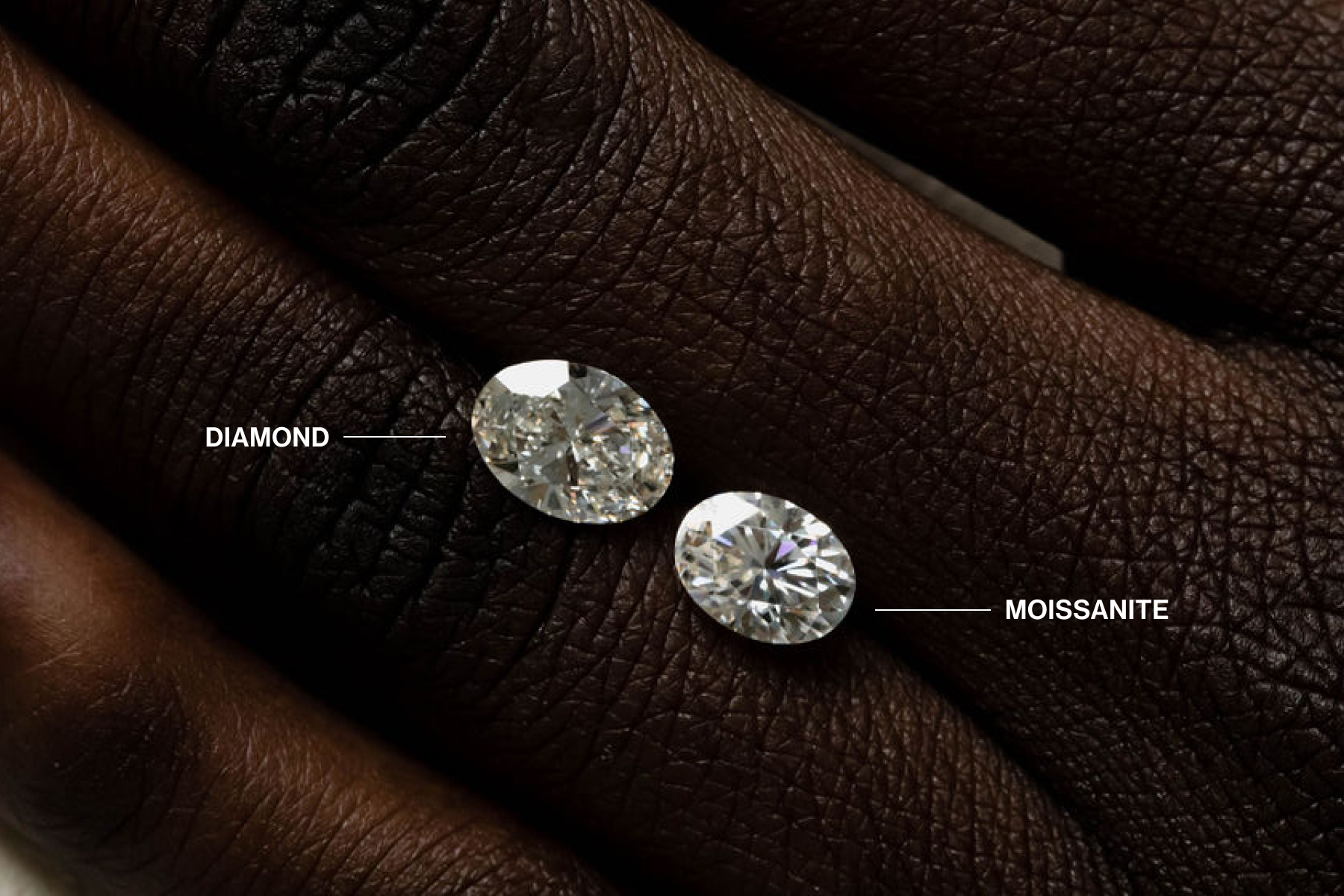For most, engagement ring shopping is a first-time introduction into the world of precious stones. And with so many to choose from, it’s important to understand their unique qualities so you can decide which one is the perfect fit.
There are many reasons why one might steer clear of the natural white diamond: you’re working with a certain budget, supporting eco-friendly practices, or you simply want something different. We’re here to remind you that no matter the circumstance, your dream ring is still attainable.
Let’s get into the details.

Lab Created Diamonds
The first (and most obvious) alternative to a natural diamond is a lab created diamond. Most commonly referred to as “lab diamonds”, this stone looks completely identical to its predecessor—because they are exactly the same.
So, what makes a lab diamond an alternative? The only distinction between the two is where they come from. Instead of being formed in the earth’s mantle (a natural diamond’s origin), they are grown in a lab by scientists through manufactured heat and pressure.
We can’t stress this enough, so we’ll say it plainly: lab created diamonds are real diamonds. In fact, they share the exact same chemical composition as a natural diamond. If an expert gemologist analyzed the two side-by-side under a microscope, it would be impossible to tell them apart.
A huge benefit to lab created diamonds is their affordability—they typically cost 20-30% less than natural diamonds. They are also graded using the 4Cs, and are generally considered an environmentally conscious choice. It’s a common misconception that lab grown stones (also called cultured or engineered diamonds) are flawless, but that is not the case. Just like a natural diamond, they will have imperfections and vary in quality.

Moissanite
When it comes to diamond alternatives, moissanite is an industry regular. The stone was discovered in 1893 by French scientist Henri Moissan, who mistakenly thought he had found diamonds. It’s easy to see why Henri was fooled—most people can’t tell the difference between the two stones at a glance. But it’s important to remember that moissanite is its own type of stone (not a diamond) with an entirely unique chemical compound.
Most moissanite today is engineered in a lab because natural moissanite is quite rare. If the two are compared side by side, the main difference is the sparkle. Moissanite is technically more “brilliant” (the amount of light reflected) than diamonds, so you can see a wider spectrum of color in the sparkle. This characteristic, along with a more affordable price tag, continues to raise moissanite’s popularity in the jewelry industry.
Just like diamonds, moissanite ranges in color quality. Some stones have a slight yellow or green tint, and others are close to colorless. Color selection should depend on the size of your ring’s stone and its setting type—the larger the stone, the more obvious the color.
Cubic Zirconia
Cubic Zirconia is another well-known diamond alternative. Also considered a diamond “imitation”, this stone is immensely cheaper than its peers—and for good reason: it ranks low in durability and loses its sparkle after a short period of time. And for this reason, experts do not recommend its use for engagement rings. We do not work with this stone at June because it doesn’t meet our quality standards.

Gemstones
Imitation diamonds aren’t the only option if you’re in the market for a diamond alternative. With their own unique style and color, a gemstone can really make an engagement ring stand out and are often lower in cost.
Emerald, sapphire, opal, ruby—there’s no shortage of options to choose from. Each stone emits an individual look and can represent something special. If you’re wanting a diamond-inspired look, consider white sapphire or topaz. Or if you want a bold pop of color, consider green emerald or blue sapphire. To help your search, learn more details about the most popular gemstones in our Engagement Ring Gemstone Guide.

The bottom line: though natural diamonds are a timeless classic, it’s not your only option when it comes to engagement rings. There are a variety of precious stones that are elegant, meaningful, and will last the test of time with the proper care and maintenance. And with the right information, you can discuss with your jeweler which one is the best fit for you.
With a dedication to fine jewelry crafted from quality materials, June creates modern heirlooms made to last. Shop our collection or create a custom ring with our design team.



